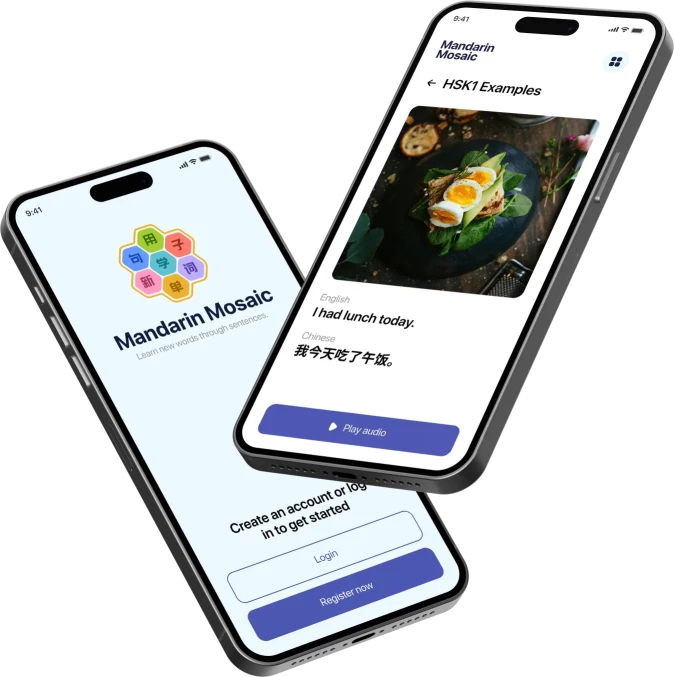Duolingo Chinese Review: The Real Pros and Cons for Serious Learners - Is It Worth Your Time?
Thinking about learning Chinese? You might've stumbled upon Duolingo, the addictive language learning app that's taken the world by storm. With its gamified approach and colourful UI, it's certainly appealing. But is it truly effective for serious Mandarin learners?

Duolingo's Chinese course offers a fun and accessible introduction to Mandarin for beginners, covering over 1,500 words and 2,500 sentences. It's great for building basic vocabulary and getting a feel for Chinese characters. The app's bite-sized lessons and daily reminders can help you establish a consistent learning habit.
However, if you're aiming for fluency or preparing for HSK exams, you might find Duolingo lacking in some areas. The app's focus on translation exercises and isolated characters doesn't always reflect natural Chinese speech. Grammar explanations are often minimal, and the course structure doesn't align perfectly with standardised proficiency tests.
Key Takeaways
- Duolingo Chinese is ideal for beginners seeking a fun, habit-forming introduction to Mandarin.
- The app's gamified approach might not suit serious learners aiming for rapid fluency.
- Consider supplementing Duolingo with other resources for a more comprehensive Chinese learning experience.
Getting Started with Duolingo Chinese

Duolingo makes it easy to dive into learning Mandarin Chinese. The app's intuitive design and structured course help you begin your language journey quickly and easily.
Ease of Use for Beginners
As a beginner, you'll find Duolingo's Chinese course quite approachable. The app starts with the most common and basic characters, making it less daunting for newcomers. You'll start with easy phrases and gradually build your vocabulary.
The interface is user-friendly, with colourful icons and clear instructions. Lessons are broken down into bite-sized chunks, perfect for short study sessions. You can easily fit learning into your daily routine, even if you've only got a few minutes to spare.
Duolingo's gamification elements keep you motivated. You'll earn points, unlock achievements, and compete with friends. These features make learning feel more like play than work.
Signup and Chinese Course Structure
Signing up for Duolingo is a breeze. You can create an account using your email or link it to your Google or Facebook profile. Once you're in, you'll take a quick placement test to assess your current level.
The Chinese course is structured into units, each focusing on different themes and skills. You'll progress through topics like greetings, food, and family. Each unit contains multiple lessons that build upon each other.
Lessons mix various exercise types:
- Matching Chinese characters to pinyin
- Translating sentences
- Speaking practice
- Listening comprehension
The free version gives you access to all core content. However, you might encounter ads and have limited hearts (lives). The premium version offers ad-free learning and unlimited hearts.
Core Features of Duolingo Chinese

Duolingo Chinese offers a range of features to help you learn Mandarin. These include tools for building vocabulary, practising grammar, and improving your pronunciation. The app also keeps you motivated with progress tracking and rewards.
Vocabulary and Grammar Instruction
Duolingo Chinese uses gamified learning to teach vocabulary and grammar. You'll encounter new words and phrases through interactive exercises. These often involve matching, translating, and filling in the blanks.
The app introduces grammar rules gradually. You'll learn sentence structures through example sentences and practice. However, there is no spaced repetition to reinforce what you've learned.
Each lesson focuses on a specific theme or topic. This helps you build vocabulary in context. You'll also see how words and phrases fit into real-life situations.
Pronunciation and Speaking Practice
Pronunciation is a crucial part of learning Chinese. Duolingo introduces you to Pinyin, the romanisation system for Mandarin. This helps you understand how to pronounce Chinese characters.
The app includes speaking exercises where you repeat words and phrases. You'll get feedback on your pronunciation. However, it's worth noting that the app's ability to assess tones is limited.
Duolingo also offers listening exercises. These help you recognise spoken Chinese. You'll hear native speakers and try to understand what they're saying.
Progress Tracking and Motivation
Duolingo keeps you engaged with its progress tracking features. You can see how many words you've learned and how far you've progressed through the course.
The app uses a system of XP (experience points) and crowns. You earn these by completing lessons and exercises. This gamified approach can be motivating for many learners.
Duolingo also has streaks and leaderboards. These encourage you to practise regularly. You can compete with friends or other learners to stay motivated.
Advantages and Disadvantages of Duolingo Chinese
Duolingo Chinese offers a unique approach to learning Mandarin, blending gamification with language lessons. You'll find both benefits and drawbacks as you navigate this popular app for your Chinese studies.
However, the game-like elements might not suit everyone. If you prefer a more traditional learning style, you might find the constant notifications and reminders a bit distracting.
Comprehensiveness vs. Depth in Language Learning
Duolingo Chinese covers a wide range of vocabulary and sentences, with over 1,500 words and 2,500 sentences in its curriculum. This breadth can begin to build your foundation in Mandarin.
The app focuses on simplified Chinese characters, which is helpful if you're targeting mainland China. However, it may fall short if you're interested in traditional characters used in Taiwan and Hong Kong.
One downside is the lack of in-depth grammar explanations. You'll learn through repetition and context, which works well for some learners but might leave others wanting more explicit instruction.
Costs and Subscription Models
Duolingo offers both free and premium options. The free version gives you access to all lessons, making it a budget-friendly choice for casual learners.
Duolingo Plus, the subscription model, removes ads and offers additional features like offline access and progress quizzes. At around £7 per month, it's relatively affordable compared to traditional language courses.
Comparative Insight: Duolingo Chinese vs. Other Learning Apps
Duolingo Chinese has some unique features, but it's not the only option out there. Let's take a closer look at how it stacks up against other apps and what alternatives you might want to consider.
Language Learning App Ecosystem
When it comes to learning Mandarin, you've got loads of choices. Duolingo's gamified approach makes learning fun, but it's not always the most comprehensive. LingoDeer offers a more structured curriculum that's tailored specifically for Asian languages. It's brilliant for tackling Chinese grammar head-on.
HelloChinese and ChineseSkill are two other popular options. They're similar to Duolingo but focus solely on Mandarin. This specialisation means they often provide more in-depth content, especially when it comes to character writing and tones.
Our app: Mandarin Mosaic offers a unique approach on learning Chinese using something called sentence mining. Using this method you'll study natural Chinese sentences and learn new words in context. With thousands of sentence examples and a spaced repetition system so that you never forget what you've learned, Mandarin Mosaic is perfect for serious learners who've outgrown Duolingo.
Remember, no single app is perfect. You might find that using a combination works best for you. Mix and match to cover all aspects of language learning: vocabulary, grammar, listening, and speaking.
Alternative Options for Learning Mandarin
If you're serious about learning Chinese, you might want to look beyond mobile apps. Traditional language courses, whether online or in-person, can provide a more rigorous learning experience. They often align with HSK levels, which is great if you're aiming for official certification.
Language exchange programmes are another fantastic option. They pair you with native speakers, giving you real-world practice. Websites like HelloTalk or Tandem can help you find language partners.
For a more immersive experience, consider podcasts or YouTube channels dedicated to teaching Mandarin. They're free and can expose you to natural speech patterns and cultural nuances that apps might miss.
Remember, the best approach often involves a mix of resources. Don't be afraid to experiment and find what works for you!
Frequently Asked Questions
Duolingo's Chinese course sparks many queries from potential learners. You might wonder about its effectiveness, limitations, and approach to teaching Mandarin. Let's address some common questions to help you decide if it's right for you.
Can you actually achieve fluency in Chinese using just Duolingo?
Achieving fluency solely through Duolingo is unlikely. While the app provides a good introduction to Mandarin, it lacks comprehensive grammar explanations and in-depth cultural context.
To become fluent, you'll need to supplement Duolingo with other resources. Consider adding language exchange partners, textbooks, or immersive experiences to round out your learning.
What are the drawbacks of using Duolingo to learn Chinese?
Duolingo's Chinese course has some limitations. The app only offers limited speaking practice, a key component of language fluency.
The translation-heavy approach might not suit all learning styles. Some users find the repetitive nature of exercises tedious over time.
How does Duolingo introduce Chinese characters in its lessons?
Duolingo introduces Chinese characters gradually alongside pinyin. You'll encounter simplified characters in context through sentences and matching exercises.
Does Duolingo Mandarin cover both simplified and traditional characters?
Duolingo's Chinese course primarily focuses on simplified characters. It doesn't offer comprehensive coverage of traditional characters used in Taiwan, Hong Kong, and some overseas Chinese communities.
If you're specifically interested in learning traditional characters, you might need to look for additional resources to supplement your Duolingo learning. Our sentence mining app, Mandarin Mosaic has full support for simplified and traditional Chinese characters.
Up to which HSK level will Duolingo Chinese take you?
Duolingo's Chinese course doesn't directly align with HSK levels. The app covers approximately 1,500+ words and 2,500+ sentences, which roughly corresponds to elements of HSK 1 - 3. This is a very basic level.
To prepare for specific HSK exams, you'll need targeted study materials. Duolingo can complement your HSK preparation but shouldn't be your sole resource for test readiness.

